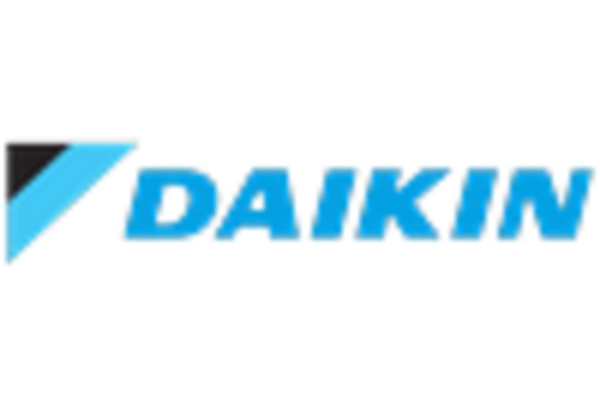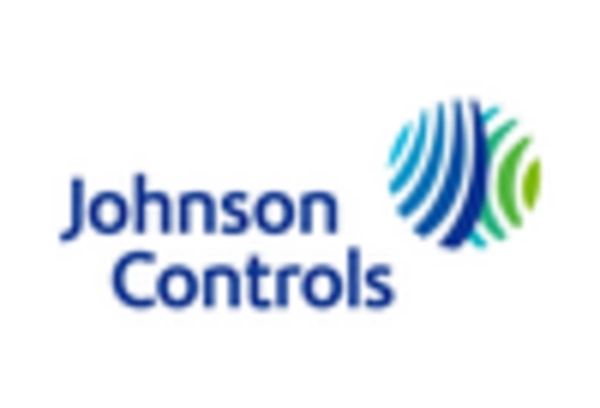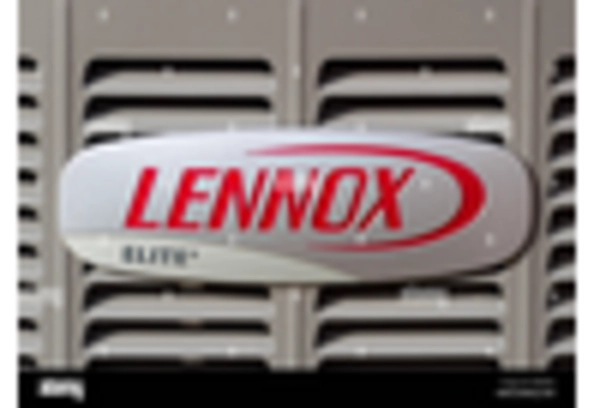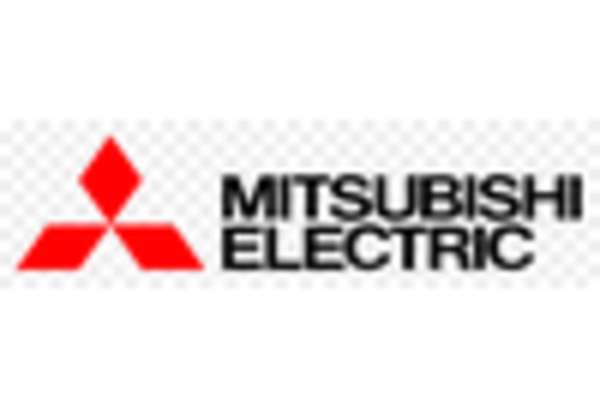Increased Construction Activities
The air handling-units market is significantly influenced by the ongoing expansion in the construction sector across the U.S. This expansion is marked by a robust economy. With a robust economy, there is a marked increase in both residential and commercial construction projects. The U.S. Census Bureau reported a year-on-year increase of approximately 10% in new housing starts, which directly correlates with the demand for air handling units. These units are essential for ensuring proper ventilation and air quality in newly constructed buildings. Furthermore, the trend towards smart buildings, which integrate advanced HVAC systems, is likely to further propel the air handling-units market. As construction activities continue to rise, the need for efficient air handling solutions becomes increasingly critical.
Regulatory Compliance and Standards
The air handling-units market is significantly shaped by evolving regulatory compliance and standards. These standards aim to improve energy efficiency and environmental sustainability. The U.S. Department of Energy (DOE) has implemented stringent regulations that require air handling units to meet specific energy efficiency criteria. These regulations not only promote the adoption of energy-efficient technologies but also compel manufacturers to innovate and enhance their product offerings. Compliance with these standards is becoming a prerequisite for market participation, thereby driving the development of advanced air handling solutions. As regulations continue to evolve, the air handling-units market is likely to experience sustained growth, as manufacturers adapt to meet these new requirements.
Rising Demand for Energy Efficiency
There is a notable surge in demand for energy-efficient solutions in the air handling-units market. As energy costs continue to rise, consumers and businesses alike are increasingly seeking systems that minimize energy consumption while maintaining optimal performance. This trend is further supported by the U.S. government's initiatives aimed at promoting energy efficiency, which include tax incentives and rebates for energy-efficient installations. According to recent data, energy-efficient air handling units can reduce energy consumption by up to 30%, making them an attractive option for both residential and commercial applications. Consequently, manufacturers are focusing on developing advanced technologies that enhance the energy efficiency of their products, thereby driving growth in the air handling-units market.
Growing Awareness of Indoor Air Quality
There is a growing awareness regarding the importance of indoor air quality (IAQ) among consumers and businesses, which is positively impacting the air handling-units market. Studies indicate that poor indoor air quality can lead to various health issues, prompting a shift towards systems that enhance air filtration and circulation. The U.S. Environmental Protection Agency (EPA) has highlighted that indoor air can be 2 to 5 times more polluted than outdoor air, leading to increased demand for air handling units equipped with advanced filtration technologies. This heightened focus on IAQ is driving manufacturers to innovate and offer products that not only meet regulatory standards but also exceed consumer expectations, thereby fostering growth in the air handling-units market.
Technological Integration in HVAC Systems
The integration of advanced technologies into HVAC systems is a key driver for the air handling-units market. Innovations such as IoT connectivity, smart sensors, and automation are transforming traditional air handling units into intelligent systems capable of optimizing performance and energy use. The U.S. market is witnessing a shift towards smart HVAC solutions that allow for real-time monitoring and control, enhancing user experience and operational efficiency. According to industry estimates, the adoption of smart HVAC technologies could lead to energy savings of up to 20%. As consumers increasingly prioritize convenience and efficiency, the demand for technologically advanced air handling units is expected to rise, further propelling market growth.

















Leave a Comment